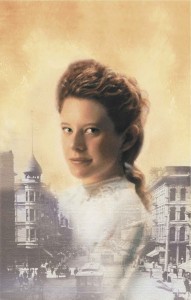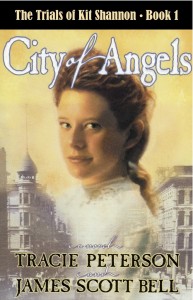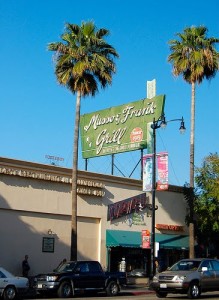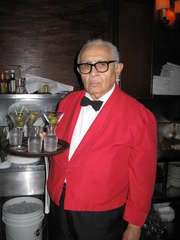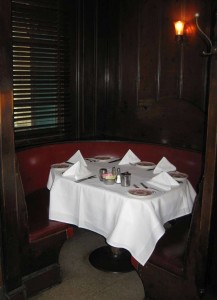James Scott Bell
Twitter.com/jamesscottbell
Today, through the wonder of digital publishing, I am announcing the re-birth of my first series character. City of Angels, Book 1 in the Trials of Kit Shannon series, is now available for an introductory price of $2.99 on both Kindle and Nook.
Let me give you the background.
I was writing stand alone legal thrillers for the CBA (Christian Booksellers Association) market, and was trying to think of a series idea. I noticed (it’s not hard to notice!) that the majority of readers in this market are women (even more than in the ABA market), and that the most popular genre of the time was “prairie romance.” This genre was set in the 1800s (think Little House on the Prairie). The usual lead character was a young woman of marriageable age, pluckily using her faith and grit to overcome challenges and find true love.
As I pondered that, it seemed to me that genre could move forward, historically speaking. One slice of history that has not been given its due is the story of my own home town, Los Angeles. It’s a great, rich tapestry, fascinating and colorful. Especially when it comes to courtrooms and the law.
So I came up with this concept: a young woman comes to turn-of-the-century Los Angeles with a determination to practice law. It was a perfect historical moment, rife with conflict, because at that time women were barely getting into the legal profession. There was a lot of male resistance to the idea. And Los Angeles in 1903 had all sorts of fascinating cross currents. It was moving from western boomlet toward urban adolescence. There was high society and low criminality. It was then (and still is) a city for dreamers and charlatans alike.
My idea, then, was to follow this young woman from her arrival in L.A. through the growing pains of the city. This would mirror her own growth and quest to practice law. I would include real, historical figures in the plots (e.g., William Randolph Hearst, Earl Rogers, Teddy Roosevelt, Houdini, John Barrymore).
Those are two key components for an enduring series character: setting and vocation. You need to know the nooks and crannies of your setting so it can take on the feeling of being another character in the story. And readers love to see authentic details about a character’s work life.
Research, friends.
I began to picture this woman in my mind. I wanted her to be of Irish descent, so she had some fire in her. I wanted her to have auburn hair and green eyes. And I wanted to name her Kit Shannon.
When I could see and hear Kit, that’s when I really started getting juiced about the project. Which is another secret of an enduring series character: you, the author, have to be truly and deeply excited about her. You ought to be thinking about her even when you’re not writing. She must be someone you have to write about. If she’s not, that lack of zest will be evident in your pages.
So I created a proposal and pitched it to an editor I knew who worked at the leading publisher of prairie romances, Bethany House.
Well, they liked the concept. But they saw a challenge. I was a male author entering a primarily female genre. So they asked me if I would consider co-writing the series with one of their popular female authors. She could, they explained, help me develop a voice for the genre and also introduce me to a good-sized readership.
I was a bit skeptical, but they offered to fly me and the other author to their home offices for a meet-and-see.
Which is how I met the wonderful, marvelous, humorous, generous Tracie Peterson. We hit it off immediately, and I mean right from the get-go. We signed a three book contract and off we went.
Tracie and I worked exceedingly well together. We brainstormed plot ideas, then I wrote a “lean” first draft. Tracie added her “layers,” a lot of which were descriptions of the era’s dress and etiquette, and more generally a woman’s point of view and voice. I then did a final going over the manuscript, cleared up any questions, and submitted to our editor. (What was nice was, by the time the third book came out, I’d gotten the hang of the voice myself. So when it came time to contract for another three books, Tracie handed the series over to me to do on my own).
When Bethany House showed me the cover art for City of Angels I was absolutely gobsmacked. Because the model looked exactly the way I’d pictured her.
And when City of Angels came out, it hit the CBA bestseller list. Women readers told me they loved this updating of the prairie romance heroine. Which is another secret of an enduring series character: make them fresh. Give them some nuance or trait or drive that is original, not just a repeat of what we’ve seen before.
I did make new readers from City of Angels, including among the younger set. In fact, Tracie and I got several letters from high school age girls who said Kit Shannon was inspiring to them. One wrote that the book helped her “not to be afraid of what others think if I’m sure of my calling.” Another wrote that Kit inspired her to pursue a dream of going to law school.
Which is why it is now my pleasure to re-introduce Kit Shannon to a new generation of readers. I hope to have the entire series out by the end of the year:
The courtrooms of 1903 Los Angeles are a man’s world––until Kit Shannon arrives
With shoulders squared and dreams set high, Kit Shannon arrives in Los Angeles feeling a special calling to the law. Yet under the care of her socialite aunt, Kit quickly comes to realize that few understand her burning desire to seek justice and practice a profession known only to men. When her aunt adamantly refuses to support her unconventional career aspirations, Kit questions whether she is truly following God’s will. And when her growing love for a man pledged to another threatens scandal, Kit knows her days might be numbered in Los Angeles.
A chance meeting with Earl Rogers, the city’s most prominent criminal lawyer, garners Kit an apprentice position. And work on a notorious murder case. Someone has been killing prostitutes in Los Angeles, but Kit is certain it is not Rogers’ client. Determined to find the truth, Kit runs full on into forces that want to stop her, forces that stretch all the way to the citadels of power in the City of Angels.
“…a great story, historical fiction plus legal thriller in the style of John Grisham.” – WorldHistoricalFiction.com
City of Angels is a full length (90,000 word) novel at the launch price of $2.99.
